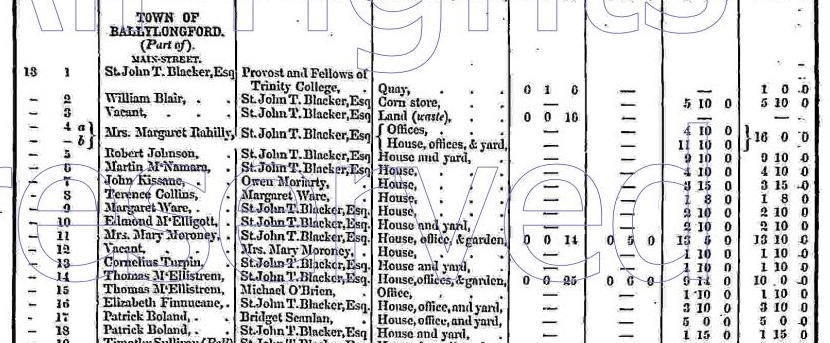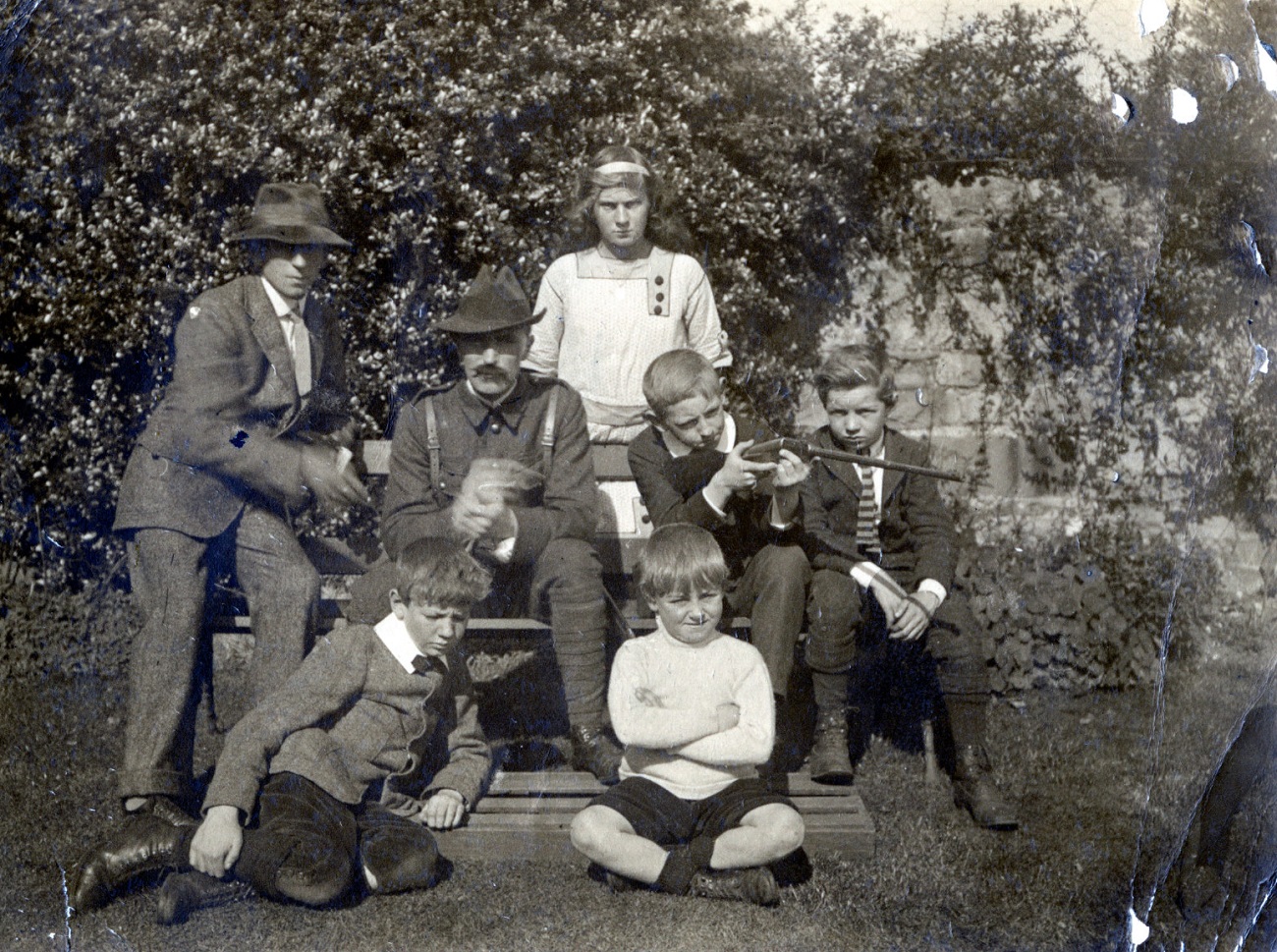O'Rahilly the family tree guy

Tree in The O'Rahilly's papers.
UCD Archives P102. (For full ref. see my site.)
humphrysfamilytree.com/ORahilly
Great-grandson of Nell Rahilly.



Reference to a Ms in the NLI with the poet's 1722 signature.
Aodhagán Ó Rathaille,
or
Egan O'Rahilly, born c.1670, died c.1730.
The celebrated Gaelic poet.
Of the Sliabh Luachra region, Co.Kerry.
One of the last of
the old Gaelic poets.




Looking through P102, the thought occurred: Maybe it is not true?


O'Reilly pedigree in the (rather unreliable)
John O'Hart, Irish Pedigrees,
5th edn, 1892.
Hugh Conallagh O'Reilly,
Lord of East Breifne 1565-83,
died 1583,
had issue:
Philip O'Reilly,
Lord of East Breifne 1595-96, imprisoned in 1585 in Dublin Castle, killed on 14 Oct 1596, his lands forfeit,
had issue:
Sean O'Reilly,
captured by the British in 1596 and held hostage in Dublin, died 31 Jan 1634,
had issue:
Capt. Owen O'Reilly,
of Clare in Crosserlough par, Co.Cavan, one of the rebel leaders in Co.Cavan in the 1641 Rebellion.

Capt. Owen O'Reilly
mentioned in deposition of 1643
giving an account of the 1641 Rebellion.
"Captain Owen MacShane MacPhillip O'Reilly"
shows he is son of Shane son of Phillip O'Reilly.
T.F. O'Rahilly provides a convincing descent of Capt. Owen O'Reilly from O'Reilly, Lord of East Breifne.
The line of descent goes back to Ragheallach (or Raighilligh), ancestor of the O'Reillys, who was killed at the Battle of Clontarf in 1014.

The entry for the poet's father in Irish Writers, Edward O'Reilly, Dublin, 1820.
T.F. O'Rahilly in [P102/209] provides a convincing identification of Owen "Clarach" O'Reilly ("Clare-man") with Capt. Owen O'Reilly, of the 1641 Rebellion, who had confiscated lands at Clare, Co.Cavan.
The poet wrote about his ancestry (albeit in vague terms).
His deathbed poem refers to MacCarthy of Co.Kerry as "those princes under whom were my ancestors before the death of Christ".
He never talked about Cavan.
He never talked about O'Reilly.
His only direct mention of O'Rahilly ("Mhuintir Rathaille") is as a Kerry family.
The problem is the above descent is too good.
If he was directly descended, not just from any O'Reillys, but from O'Reilly, Lord of East Breifne, you would think he would mention it.
Conclusion: The father of the poet must remain uncertain.

Extract from
Danta Aodhagain Ui Rathaille: The poems of Egan O'Rahilly,
eds. Rev. Patrick S. Dineen and Tadhg O'Donoghue,
2nd edn, London, 1911.
Things to do: See this, if not burnt in 1922!

Extract from Michael Warren's letter of 1906 [P102/207(4)].
He meets old Julia Sheehan and she says Conn was the son of Fionn (nephew of the poet).
Things to do: Date this!

The eviction.
P102/207(4).
Said to have gone to Ballylongford, but no real evidence of that.
Youngest child, Michael Joseph Rahilly, baptised 6 Sept 1810, in Killarney.
Was buried in Muckross Abbey, Killarney, at or near the poet's grave.

Extract from Michael Warren's letter of 1906 [P102/207(6)].
Shows Michael Rahilly as son of Cornelius Rahilly.

He was a priest at Abbeydorney in 1820.
He was PP of Tarbert and Ballylongford
from 1823 until his death 1832.
After he becomes PP we find
multiple Rahilly children go to Ballylongford:
![]()
The Public Record Office, Dublin, before it was burnt in 1922.
The 1821 census would probably show the Rahillys still in Killarney.
No Rahilly listed at Ballylongford in [Tithe Survey, 1824].

Michael Joseph Rahilly signs his name in his notebook at Ballylongford on Thur 3 May 1832.
[P102/208] says he was going for the priesthood.
But he fell in love with Margaret McEllistrem when on a visit to his uncle at Ballylongford.
(Implies he lived Killarney.)
His father was angry with him leaving the priesthood and cut him off.


Testimonial to Michael Joseph Rahilly dated 30 Jan 1833 from John O'Donoghue, scholar, TCD.
Probably needed when he joined the police.

"Richard McElistrem" listed with 11 acres
at Ballylongford in
[Tithe Survey, 1824].

The death of Michael Joseph in 1849.
Extract from
[P102/208(81)].

Grave of Richard Mac Ellestrem (died 1848), Lislaughtin Abbey.

Mrs. Margaret Rahilly
on Main St, Ballylongford,
in
[Griffiths Valuation, 1851].
She has multiple properties.
Plot 4 is the old Rahilly house.


Michael J. Rahilly goes to university and becomes a doctor.
From
Irish Times,
June 29, 1859.

Dr. Michael Joseph Rahilly, c.1865 (before his death in 1866).
Served on HMS Gladiator from 1860 to 1864, in the Atlantic, Gulf of Mexico and Caribbean.
When waiting to board ship at Queenstown, he wrote to his brother Richard,
asks him to "send me my favourite book" which he says is History of the Irish Rebellion in 1798, by William Hamilton Maxwell.
Aodogan O'Rahilly thought this might show some early interest in nationalism.

From
History of the Irish Rebellion in 1798,
William Hamilton Maxwell, 1854.
Aodogan O'Rahilly thought Rahilly liking this book
might show some early interest in nationalism,
but in fact the opposite.
Maxwell was an Ulster Protestant who served in the British Army,
and the book is famous for its anti-Irish, simian depictions of the rebels.
Liking this book shows how pro-British the Rahillys were.

Richard Rahilly and family.
Photo c.1887.

Grocer, spirit dealer, shopkeeper, baker, miller, fish curer, draper, general merchant, farmer, landowner, importer, inventor, post office and shipping agent.
Apparently not a public house, though.


Richard listed as a JP when he signs a group letter
from many JPs and notable figures of Co.Kerry,
urging John Adye Curran, County Court Judge of Kerry, not to leave the county.
Irish Times, February 12, 1891.

Richard's brother-in-law Patrick Fitzgerald.
In a letter of 17 May 1891, Richard
refers to his brother-in-law's support for Parnell:
"Patt of course with his accustomed aberration of intellect is a rabid Parnellite".
His widow and The O'Rahilly sold the house and business soon after.

The first sign of nationalism is letters controversy in 1899 in the European edition of the New York Herald,
following celebrations of Queen Victoria's 80th birthday.
Rahilly criticised the celebrations.
See 7 and 14 June 1899.
1900-1910 - Decade of (among other things) family tree research.
Re-naming as "O'Rahilly"
and then "The O'Rahilly".

The O'Rahilly's dramatic entry
at 40 Herbert Park in
[Thom's, 1914].

From
Rev. Daniel Mangan's
letter to his 1st cousin Anno after the death of her brother The O'Rahilly
in the 1916 Rising.
"That rising was indeed a foolish and a hopeless affair,
but no doubt those who took part in it did so with the best intentions."


Fr. Con on the death of his 1st cousin
The O'Rahilly in the 1916 Rising.
"Thanks be to God I have lived to see the day."
From
letter of 18 May 1916.

Letter from Alfred to
Nell
on 25 May 1916, after 1916 Rising.
"I am going to try to be an Irishman in future."
Note that he is still "Rahilly" and has not yet adopted "O'Rahilly".

"Your eldest boy Risteard is now The O'Rahilly."
Letter
from Maire de Buitleir
to Nancy O'Rahilly, 7 May 1916.

James Clarence Mangan, the tragic poet (1803-49).
Exact relationship unknown.

Account of the faction fight in Shanagolden in 1825.
From Freemans Journal,
June 14, 1825.
If Kennedy O'Brien had not been killed, The O'Rahilly would not have existed.

Joseph Donovan
of Lisgordan House
signs a Sept 1799 petition in favour of the proposed Act of Union.
Finns Leinster Journal, 28 Sept to 2 Oct, 1799.
Re-discovery of a Gaelic Ireland.
The family tree was the origin of his nationalism?

Back: Sighle Humphreys.
Middle (Left to Right): Dick Humphreys, The O'Rahilly, Emmet Humphreys (born 1902), Mac O'Rahilly (born 1903).
Front (Left to Right): Aodogan O'Rahilly (born 1904), Niall O'Rahilly (born 1906).
humphrysfamilytree.com
In particular in these family trees:
Dr. Mark Humphrys